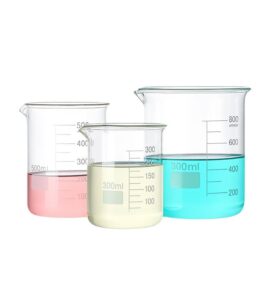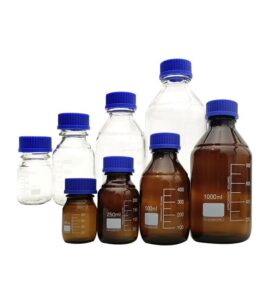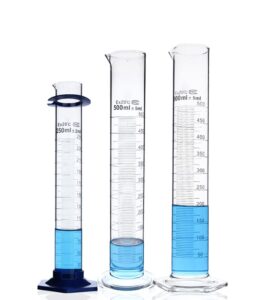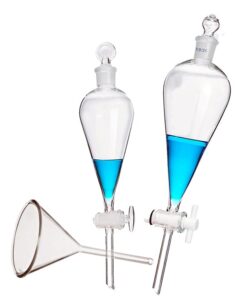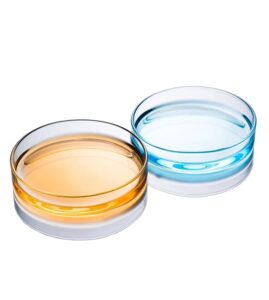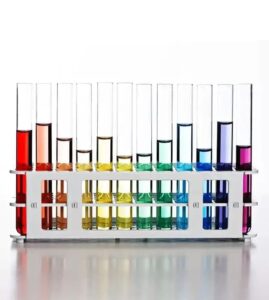Have you ever marveled at the pristine condition of laboratory glassware, or wondered how companies ensure the safety and quality of these delicate yet critical instruments? The secret lies in non-destructive testing (NDT), a suite of methods that scrutinize the integrity of glassware without compromising its functionality.
Non-destructive inspection (NDI) is a game-changer in maintaining the high standards required for scientific glassware. It encompasses various techniques to detect defects and assess quality, ensuring that each piece of glassware is safe and up to the task. These methods are not just about maintaining standards; they’re about safeguarding experiments and processes.

Introduction to Non-Destructive Testing of Laboratory Glassware
Non-Destructive Testing (NDT) refers to a group of analysis techniques used in science and industry to evaluate the properties of a material, component, or system without causing damage. In the context of laboratory glassware, NDT is crucial as it ensures the integrity and safety of glass containers without compromising their usefulness in future experiments.
Importance of Non-Destructive Testing in Laboratories
In laboratories, the consequences of using compromised glassware can be severe, ranging from failed experiments to hazardous breakages. NDT plays a vital role in preventing these issues by identifying defects and weaknesses before they lead to failure. This proactive approach is essential for maintaining the high standards required for laboratory safety and accuracy.
Why Embrace Non-Destructive Inspection for Glassware?
In the realm of scientific research and industrial applications, the integrity of glassware is not just about functionality—it’s about safety, precision, and reliability. Non-destructive inspection techniques offer a way to preserve these qualities by identifying potential issues before they lead to failure.
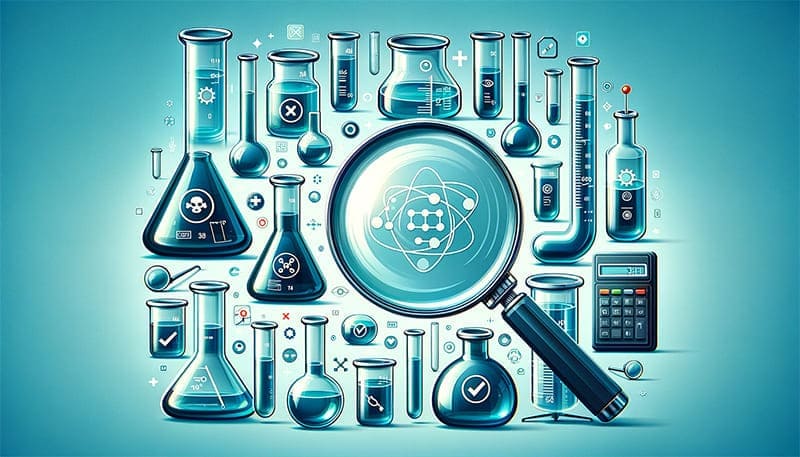
Common Non-Destructive Testing Techniques for Glassware
Non-destructive testing (NDT) of glass apparatus involves evaluating the quality and safety of the apparatus without damaging it or affecting its performance. Here are some methods used for the non-destructive testing of glass instruments:
- Visual Inspection: Carefully observing the external appearance of the glass apparatus to check for visible defects, cracks, bubbles, or other quality issues. The dimensions, shape, and markings of the glass instrument are also verified against the design requirements.
- Structural Inspection: Employing non-destructive techniques like X-rays or ultrasound to inspect the internal structure of the glass apparatus, assessing manufacturing quality and safety. These technologies can detect internal defects, inclusions, and porosity.
- Mechanical Performance Testing: Evaluating the strength, toughness, and hardness of the glass apparatus through mechanical tests. These performance indicators reflect the safety and reliability of the glass instrument. Common mechanical tests include impact tests and pressure tests.
- Optical Performance Testing: Using spectral analysis and microscopy to assess optical properties such as transparency and refractive index. These indicators reflect the quality and effectiveness of the glass apparatus.
- Chemical Composition Analysis: Determining the main components and their concentrations in the glass apparatus to assess material quality and purity. This analysis reflects the manufacturing process and quality control of the glass instrument.
- Pressure Resistance Testing: Testing the glass apparatus’s ability to withstand pressure by applying or reducing pressure. The test involves gradually increasing the pressure and monitoring for deformation or breakage to evaluate the apparatus’s reliability and safety under high or negative pressure conditions.
- Impact Resistance Testing: Simulating the impact conditions that the glass apparatus might face during use to test its performance under shock. The apparatus is subjected to specific impact forces, and observations are made for cracks or breakage to assess its resistance to accidental impacts.
- Seal Integrity Testing: Evaluating the sealing performance of the glass apparatus by detecting gas leakage under pressure or vacuum conditions. The test involves placing the apparatus in a sealed container and gradually increasing or decreasing the pressure to observe any gas leakage. Seal integrity testing assesses the gas seal performance of the apparatus to prevent safety hazards due to gas leaks.
- Corrosion Resistance Testing: Exposing the glass apparatus to corrosive solutions or environments to test its resistance to chemical substances. The surface corrosion condition of the glass apparatus is regularly checked and recorded. Corrosion resistance testing assesses the apparatus’s ability to resist chemical substances, thereby extending its lifespan and safety.
Overall, non-destructive testing of glass apparatus requires a comprehensive application of various techniques and methods. Selecting appropriate testing methods based on the specific use and requirements of the glass apparatus can provide a thorough understanding of its quality and safety levels, ensuring laboratory safety.
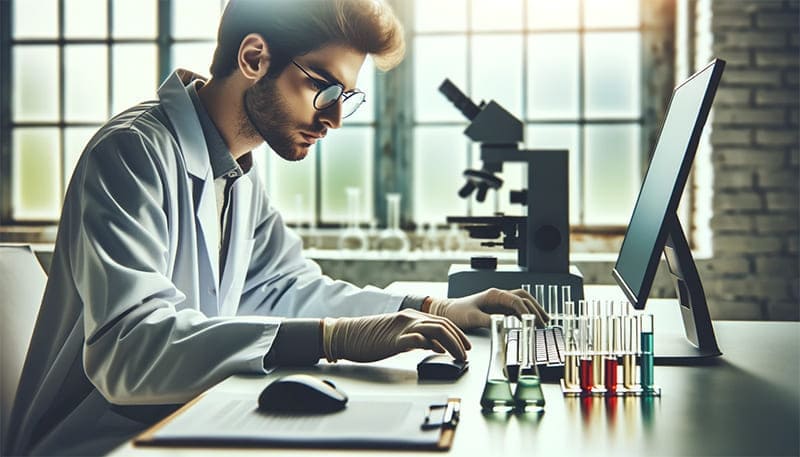
Implementing NDT in Laboratory Settings
Implementing NDT requires careful planning and execution. It typically involves the following steps:
- Selecting the Right Technique: Depending on the type of glassware and its intended use, the appropriate NDT method should be chosen. For example, volumetric flasks might require more rigorous testing compared to a standard beaker.
- Regular Scheduling: NDT should be part of a regular maintenance schedule to ensure that all glassware is consistently checked for integrity.
- Training Personnel: Technicians performing NDT need to be well-trained in the chosen methods and in interpreting the results accurately.
- Record Keeping: Keeping detailed records of inspections helps track the lifespan and reliability of each item of glassware.
Prioritizing Safety: Detailed Considerations in NDT Practice
When implementing Non-Destructive Testing (NDT) in laboratory settings, it’s crucial to consider the following detailed safety and environmental aspects:
- Handling of Chemicals and Materials: Ensure that all chemicals and materials used in NDT are handled according to safety regulations. This includes proper storage, usage, and disposal to prevent contamination or hazardous exposure.
- Waste Management: Develop and follow strict protocols for disposing of any waste generated during NDT. This includes materials from tests that may involve chemicals or other hazardous substances.
- Equipment Maintenance and Calibration: Regularly maintain and calibrate NDT equipment to prevent malfunctions that could lead to safety hazards or inaccurate results.
- Ventilation and Containment: Use appropriate ventilation systems and containment strategies, especially when NDT methods involve substances or processes that might release harmful particles or fumes.
- Personal Protective Equipment (PPE): Ensure that all technicians and nearby personnel are equipped with the necessary PPE, such as gloves, goggles, and lab coats, tailored to the specific NDT methods being used.
- Training on Emergency Procedures: Train all personnel in emergency procedures related to NDT processes, including spill response, first aid, and equipment malfunction.
- Regular Safety Audits: Conduct regular safety audits and risk assessments to identify and mitigate potential hazards associated with NDT operations.
- Environmental Compliance: Stay informed and compliant with local, state, and federal environmental regulations that apply to NDT methods and materials.
By meticulously addressing these considerations, laboratories can effectively minimize risks and create a safer, more environmentally conscious working environment while ensuring the integrity and reliability of their glassware and experimental results.
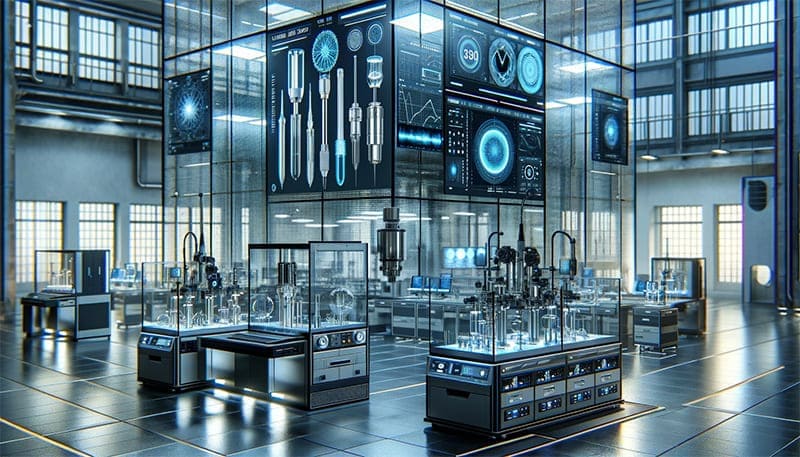
Cutting-Edge Advances in Glassware Inspection Techniques
In the quest for ensuring the utmost quality and safety of laboratory glassware, technological innovations have significantly advanced non-destructive testing methods. These enhancements bring precision and efficiency to the forefront of glassware inspection. Specifically, we see remarkable developments in the following areas:
- Ultrasonic Testing: Improved for detecting fine flaws within glass structures, enhancing early detection of potential weaknesses or failures.
- Thermal Imaging Techniques: Advanced to provide detailed insights into stress distribution across glassware, identifying areas of weakness under various temperature conditions.
- Optical Testing: Including high-resolution microscopy and photonic sensors, has improved to offer more precise assessments of glass integrity and quality.
These advancements represent a leap forward in our ability to maintain the integrity and safety of essential laboratory glassware. By continuously integrating these technologies, laboratories can ensure the reliability of their glassware and the validity of their experimental results.
Empowering Technicians: The Role of Training and Certification in NDT
The success of Non-Destructive Testing (NDT) hinges on the proficiency of technicians conducting the inspections. Proper training and certification are essential, as they ensure that technicians have the necessary skills and knowledge to perform accurate assessments and interpret results effectively. Various training programs are available, ranging from basic courses on NDT principles to advanced specialty techniques specific to laboratory glassware. These programs often culminate in certification processes that validate a technician’s expertise. Moreover, continuous education is vital in keeping up with technological advancements and evolving industry standards, ensuring that NDT remains a reliable and effective tool for maintaining the quality and safety of laboratory operations. Investing in the training and certification of technicians is not just about fulfilling a requirement; it’s about empowering individuals to contribute significantly to the scientific community’s pursuit of precision and safety.
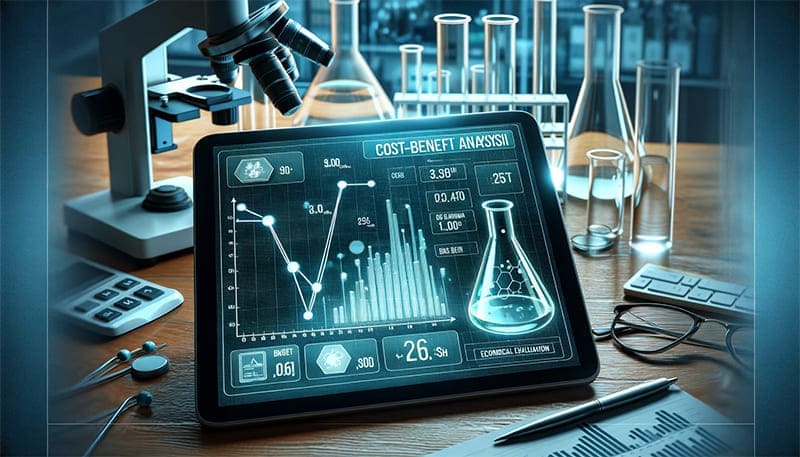
Evaluating the Value: Cost-Benefit Analysis of NDT in Laboratories
Implementing Non-Destructive Testing (NDT) in laboratory settings involves an initial investment in specialized equipment and training for personnel. While the upfront costs may seem significant, the long-term benefits of incorporating NDT far outweigh these initial expenses. By preventing glassware failures, NDT helps avoid costly experiment disruptions and potential hazards, ensuring the safety of personnel and the integrity of research. Moreover, the prolonged lifespan of glassware and the maintenance of high-quality standards result in sustained savings and improved reliability. In essence, the adoption of NDT is an investment in the laboratory’s future, promoting a safer, more efficient, and cost-effective operation over time.
Challenges and Considerations
While NDT offers many benefits, there are challenges too. These might include the cost of specialized equipment, the need for trained personnel, and the time required to perform tests without disrupting lab schedules. Balancing these factors against the benefits of enhanced safety and reliability is key to effective NDT implementation.
The Future of Non-Destructive Testing in Labs
Advancements in technology continue to expand the capabilities of NDT. From more sophisticated imaging techniques to AI and machine learning for better defect recognition and prediction, the future of NDT in laboratory settings is promising. These advancements could lead to quicker, more accurate inspections with less manual intervention.
Closing Statement
As we navigate the critical world of laboratory precision and safety, embracing non-destructive testing (NDT) techniques becomes not just an option but a necessity. Let’s commit to the continuous advancement of these techniques, ensuring the utmost quality and safety of our scientific endeavors. Join the movement of meticulous care and precision — become a guardian of your laboratory’s future by mastering and advocating for comprehensive non-destructive inspection techniques today!


